Contents
- 10 “OKO”, North Tower | 245 m
- 9. Evolution Tower | 255 m
- 8. City of Capitals, St. Petersburg Tower | 256,9 m
- 7. «Triumph-Palace» | 264,1 m
- 6. Naberezhnaya Tower, Tower C | 268,4 m
- 5. City of Capitals, Moscow tower | 301,6 m
- 4. “Eurasia” | 308,9 m
- 3. “Mercury Tower” | 338,8 m
- 2. OKO South Tower | 354 m
- 1. “Federation”, tower “Vostok” | 374 m
The development of Moscow has been a sore subject for residents of the capital for many centuries. It is hard to imagine that once the townspeople were afraid of even five-story houses. Initially, only churches and temples reached for heaven. Until now, in some historical areas, they stand out noticeably among other buildings. They were followed by tenement houses, striving to get the most out of the expensive metropolitan land and emphasize the ambitiousness of the owners.
During Soviet times, high-rise construction in Moscow unfolded in full force. The main building of Moscow State University held the palm from 1953 until the construction of the ambitious Triumph Palace in 2003. Following him, the skyscrapers of Moscow City, which have already become a symbol of the city, began to be erected.
The Moscow International Business Center was originally conceived as the “most-most”, so it is not surprising that with the beginning of active development, ever higher skyscrapers appeared. And it’s easy to guess that soon there will be new construction records in Moscow City. We present the rating of the tallest buildings in Moscow.
10 “OKO”, North Tower | 245 m
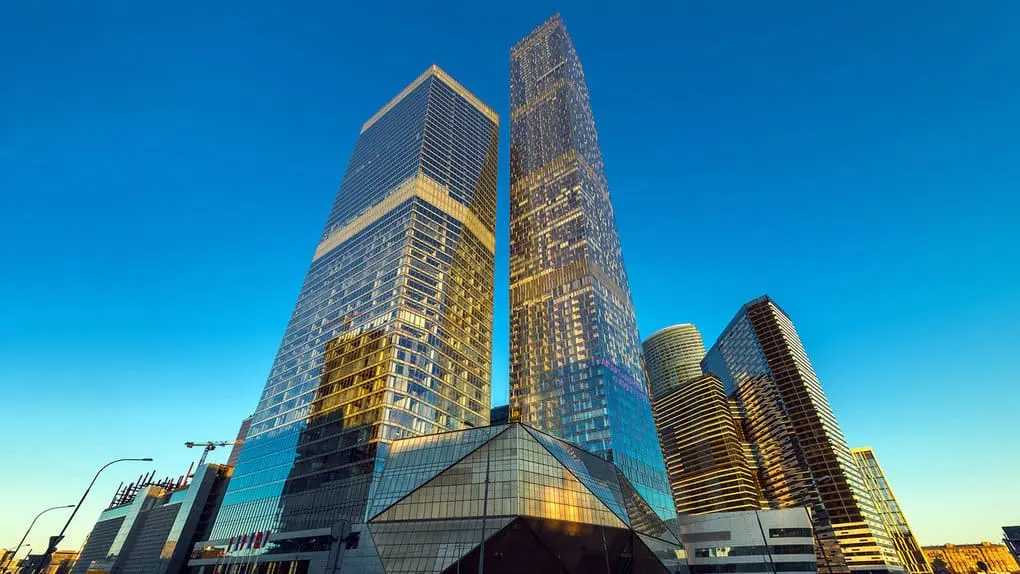
- Year of construction: 2014
- Architect: American bureau SOM (Skidmore, Owings and Merrill).
- Number of floors: 49
- Purpose: offices.
The complex of two towers, made in a postmodern style. Facades are decorated with tinted glass. The name “EYE” is an abbreviation for the phrase “united by a foundation crystal.” The northern skyscraper is completely given over to the offices of large companies and the offices of the Moscow City Hall.
9. Evolution Tower | 255 m
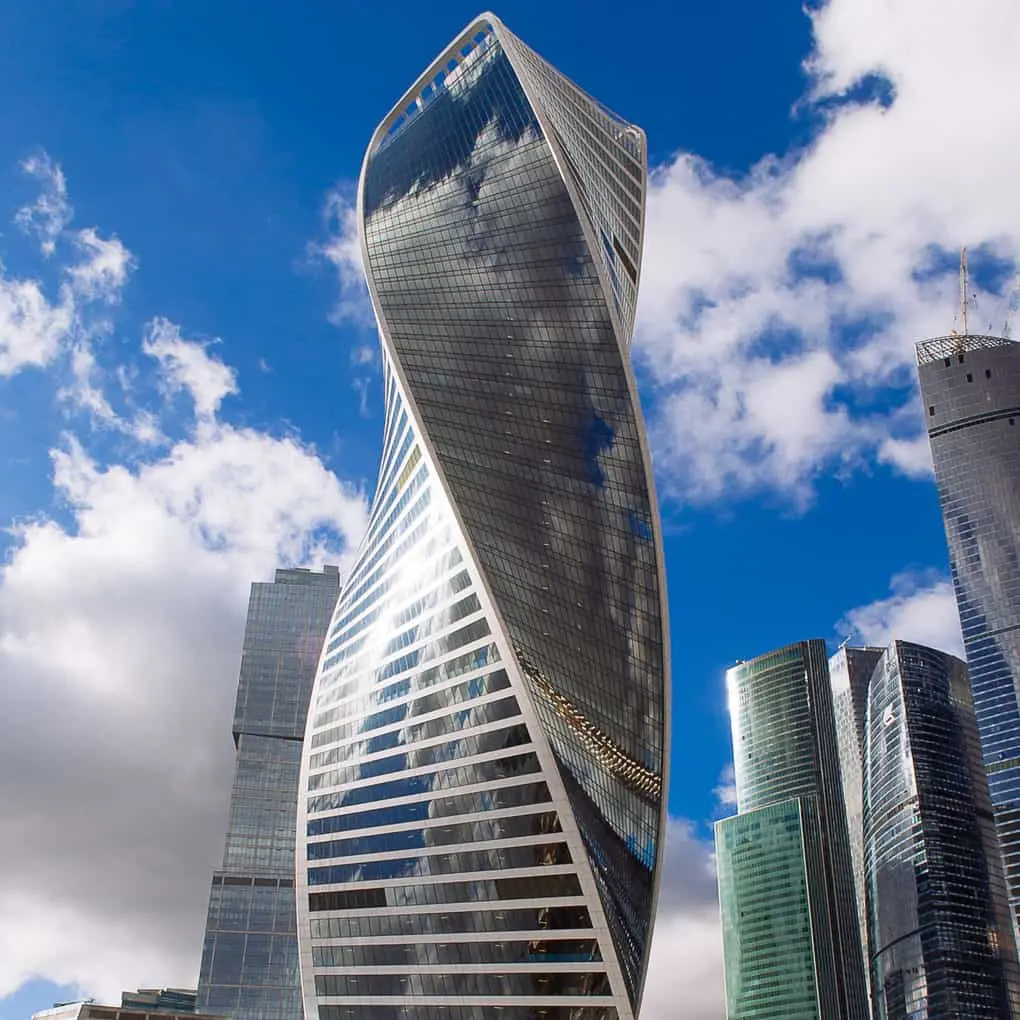
- Year of construction: 2014
- Architect: Alexander Burkov, concept by Tony Kettle (Scottish bureau RMJM).
- Number of floors: 52 + 2 underground.
- Purpose: offices and shopping areas.
The building stands out against the background of other skyscrapers in Moscow City with its spiral shape. Initially, the largest Wedding Palace in the city was planned in its place. The RMJM bureau designed the skyscraper’s spiral view, symbolizing the Eastern concept of yin and yang, or newlyweds whirling in dance. Later, the original idea had to be abandoned and the building given over to commercial needs.
During the construction, innovative engineering solutions were applied. Each floor is rotated 3 degrees to the previous one, resulting in more than 150 degrees of “twisting” of the skyscraper.
Since its construction, the skyscraper has received numerous professional awards around the world.
8. City of Capitals, St. Petersburg Tower | 256,9 m
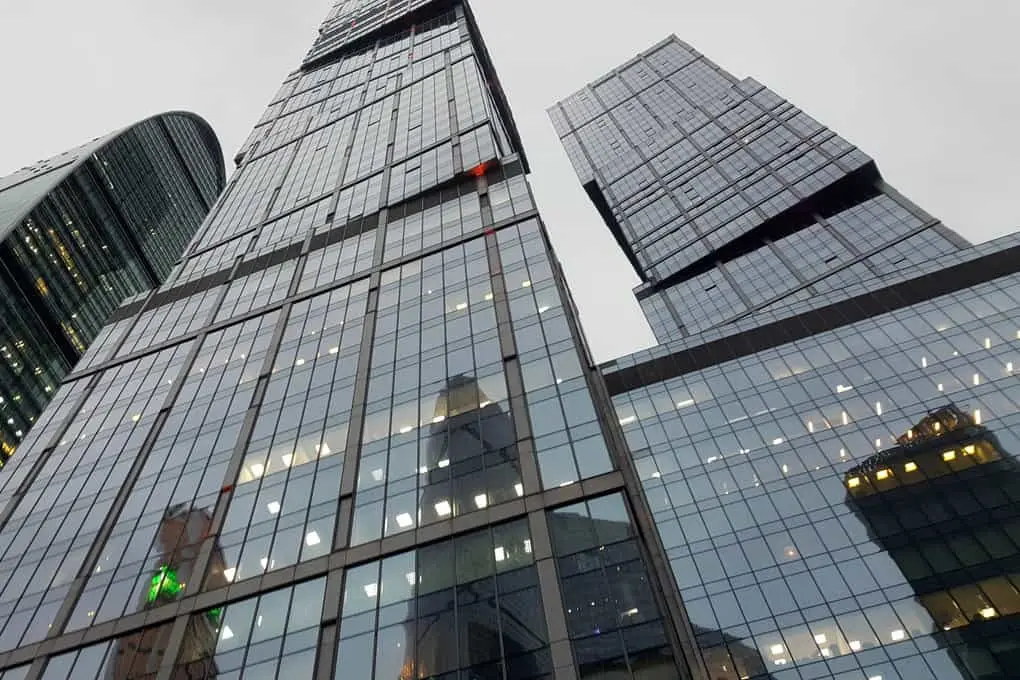
- Year of construction: 2009
- Architect: Eric van Egeraat, NBBJ US Bureau.
- Number of floors: 65
- Purpose: residential apartments, recreational and commercial areas.
The City of Capitals complex symbolizes the two main cities of Russia – Moscow and St. Petersburg. Skyscrapers attract attention with their unusual design: the blocks are offset relative to each other. The complex is finished with tinted glass, which adds dynamics and solemnity to the towers.
7. «Triumph-Palace» | 264,1 m

- Year of construction: 2006
- Architects: Andrey Trofimov, Elena Treshchilina, Viktor Shteller, Olga Markova (APB Tromos).
- Number of floors: 57
- Purpose: residential apartments.
Triumph Palace is the tallest fully residential skyscraper not only in Moscow, but in the whole world. This merit has already been noted in the Guinness Book of Records. The building is notable for its stylization of the famous Stalinist skyscrapers, which became a symbol of the 1950s. Exquisite facades are decorated with granite, porcelain stoneware and travertine. After the construction of the Triumph Palace, it became the subject of fierce debate about the architectural decisions made. The building was criticized for deviating from the canons of the same Stalinist skyscrapers. But, despite this, it still remains a significant building of the city. The uniqueness of the complex has made it a home for many domestic politicians and stars.
The last three floors belong to a boutique hotel that tops the list of the highest hotels in Europe.
6. Naberezhnaya Tower, Tower C | 268,4 m
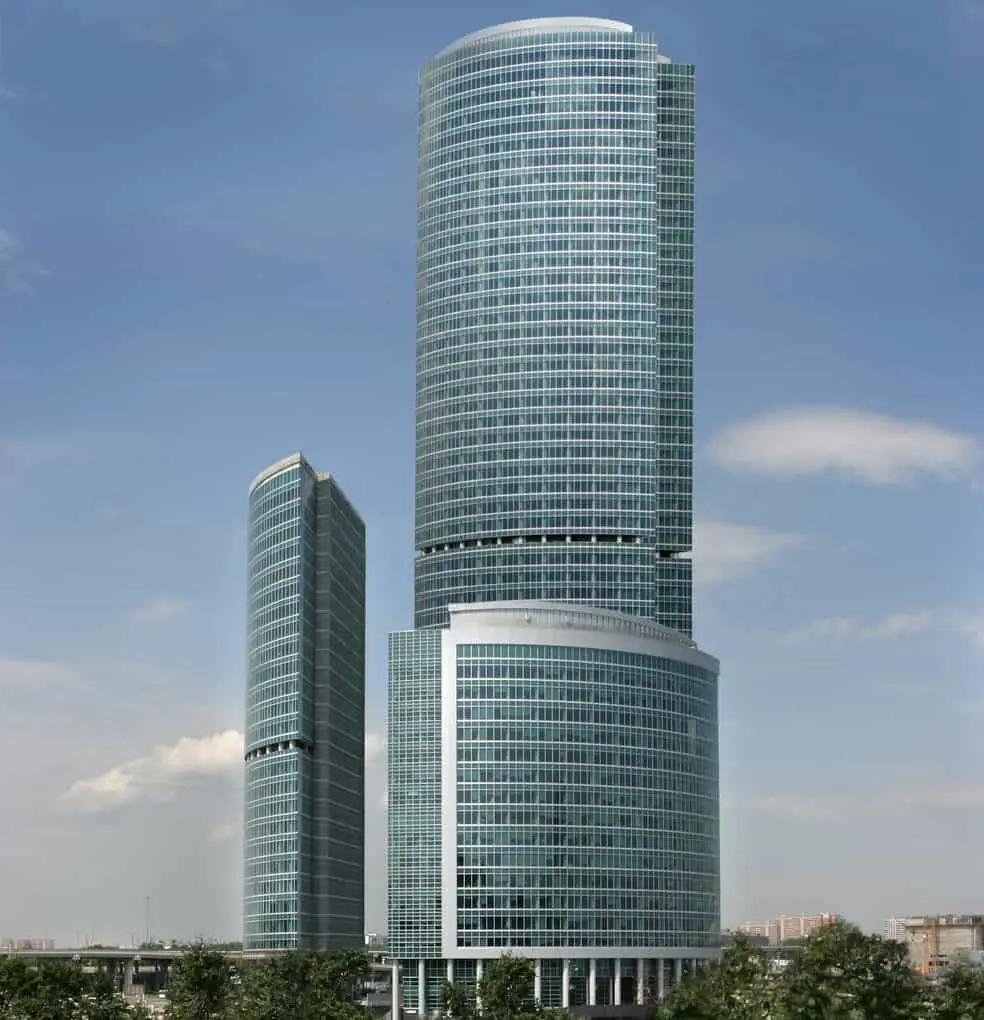
- Year of construction: 2007
- Architects: Vehbi Inan, Oljay Osturk.
- Number of floors: 60
- Purpose: offices.
Naberezhnaya Tower is a postmodern complex of three towers:
- A 85 m high and 17 floors,
- B 127 m high and 27 floors,
- With a height of 268,4 m and 60 floors.
At the moment, it is the most filled building in Moscow City. The complex is designed specifically for offices and business premises.
5. City of Capitals, Moscow tower | 301,6 m
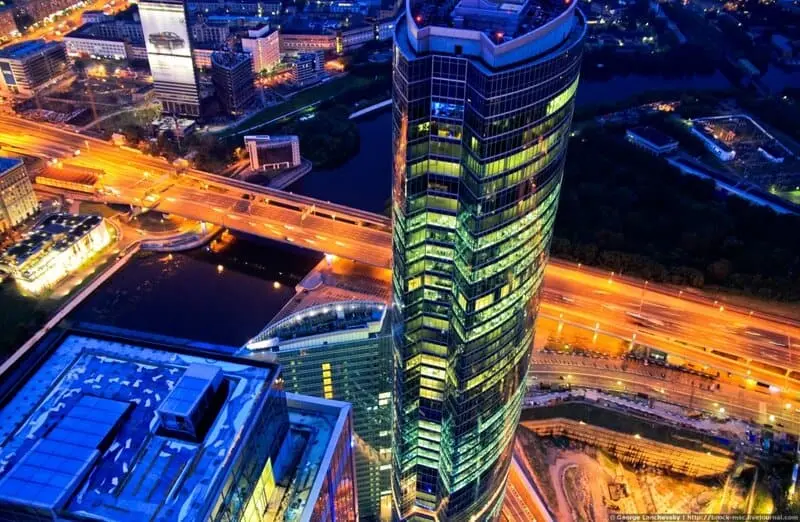
- Year of construction: 2009
- Architect: Eric van Egeraat, NBBJ US Bureau.
- Number of floors: 73
- Purpose: residential apartments, recreational and commercial areas.
The City of Capitals has been noted by many international experts as one of the best design projects in Russia, the best multifunctional skyscraper complex, a project that “made the city more interesting”, the most popular skyscraper in Europe.
Prior to the construction of Mercury in 2013, the Moscow Tower topped the list of the tallest buildings in the city.
4. “Eurasia” | 308,9 m
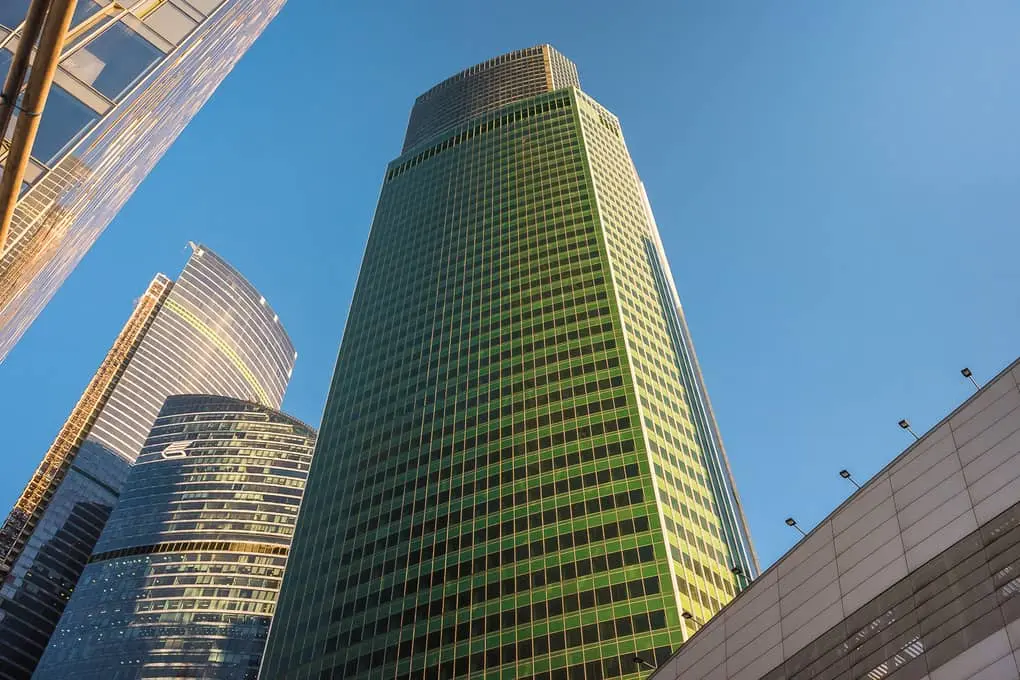
- Year of construction: 2014
- Architect: architectural company SHCA (Swanke Haydell Connen Architects).
- Number of floors: 70 + 5 underground.
- Purpose: offices, residential apartments.
The tallest building in Europe with a metal frame, which is why the tower is sometimes called the “Steel Top”. The facade of the skyscraper is laconic and finished with tinted emerald glass, which opens up breathtaking panoramic landscapes and protects from excessive solar radiation.
3. “Mercury Tower” | 338,8 m

- Year of construction: 2013
- Architects: Frank Williams, Mikhail Posokhin, Gennady Sirota.
- Number of floors: 75 + 5 underground.
- Purpose: offices, residential apartments, recreational and retail areas.
The skyscraper stands out among other buildings in Moscow City with its bright facade, finished with tinted yellow glass. The so-called “Golden Tower” was designed as an environmentally friendly building. Most of the offices during the day do not require additional lighting, and part of the rainwater is collected and used for technical purposes. In addition, “Mercury” tops the rating of the highest media facades in Europe.
2. OKO South Tower | 354 m
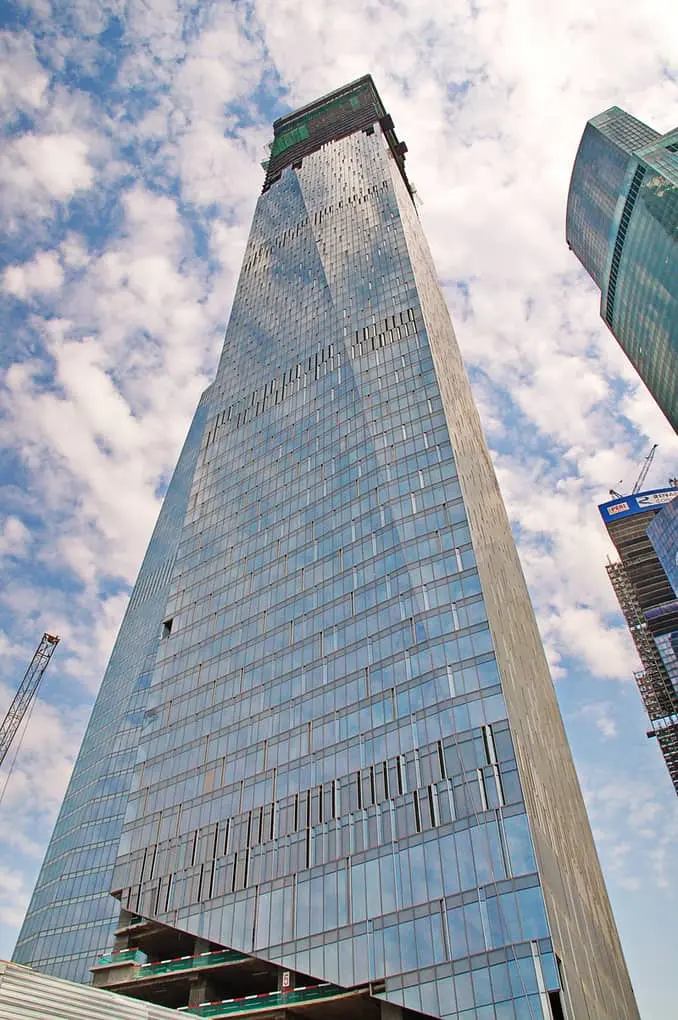
- Year of construction: 2016
- Architect: American bureau SOM (Skidmore, Owings and Merrill).
- Number of floors: 85
- Purpose: residential apartments.
The southern skyscraper is given over to modern elite residential apartments and a luxurious five-star hotel. On the roof is the highest observation deck in Europe. It is also the only open area on the territory of Moscow City.
1. “Federation”, tower “Vostok” | 374 m
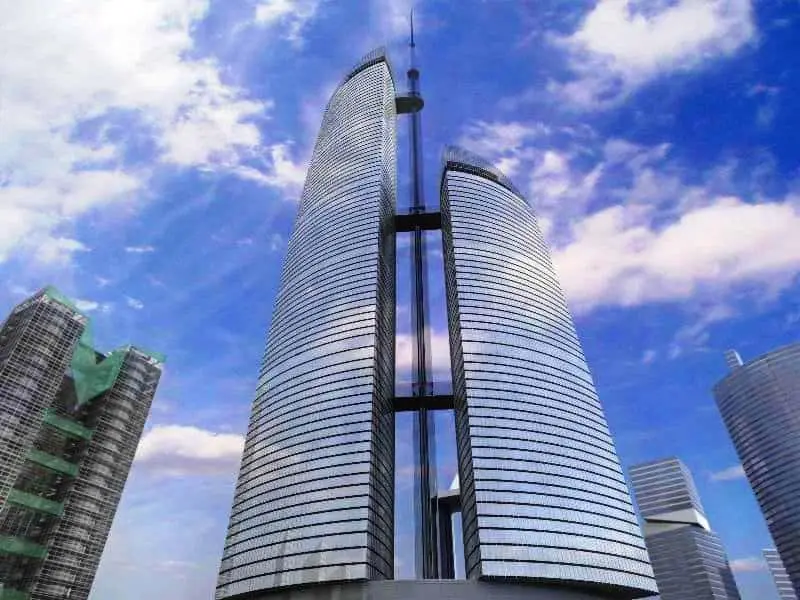
- Year of construction: 2017
- Architects: Sergei Tchoban and Peter Schweger.
- Number of floors: 101
- Purpose: offices, residential apartments and an observation deck.
The tower is recognized as the tallest building in Moscow and ranks second among European skyscrapers, second only to St. Petersburg’s Lakhta Center. However, “Vostok” with 101 floors is ahead of Lakhta’s 87 floors.
To realize such an ambitious project, the most stringent building codes were applied. Unique engineering solutions were also developed and successfully applied. Thus, the concrete base of the eastern part of the building was included in the Guinness Book of Records as the most voluminous injection of material.
The tower gained additional notoriety due to a fire in April 2012. 25 units and 4 helicopters were deployed to extinguish it. Despite the use of air technology, it was not possible to eliminate the fire for a long time. As a result, casualties and serious damage were avoided, and construction continued.










